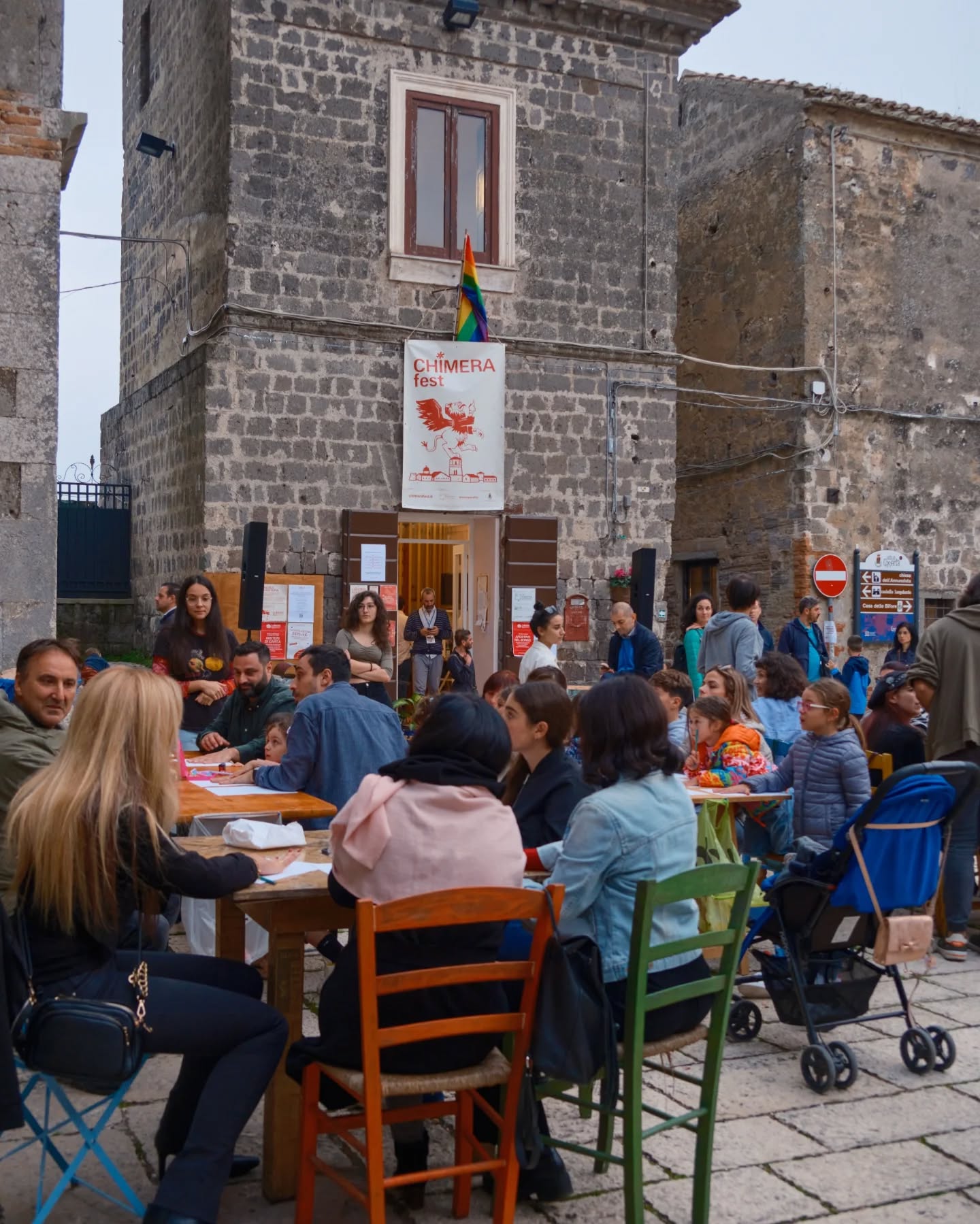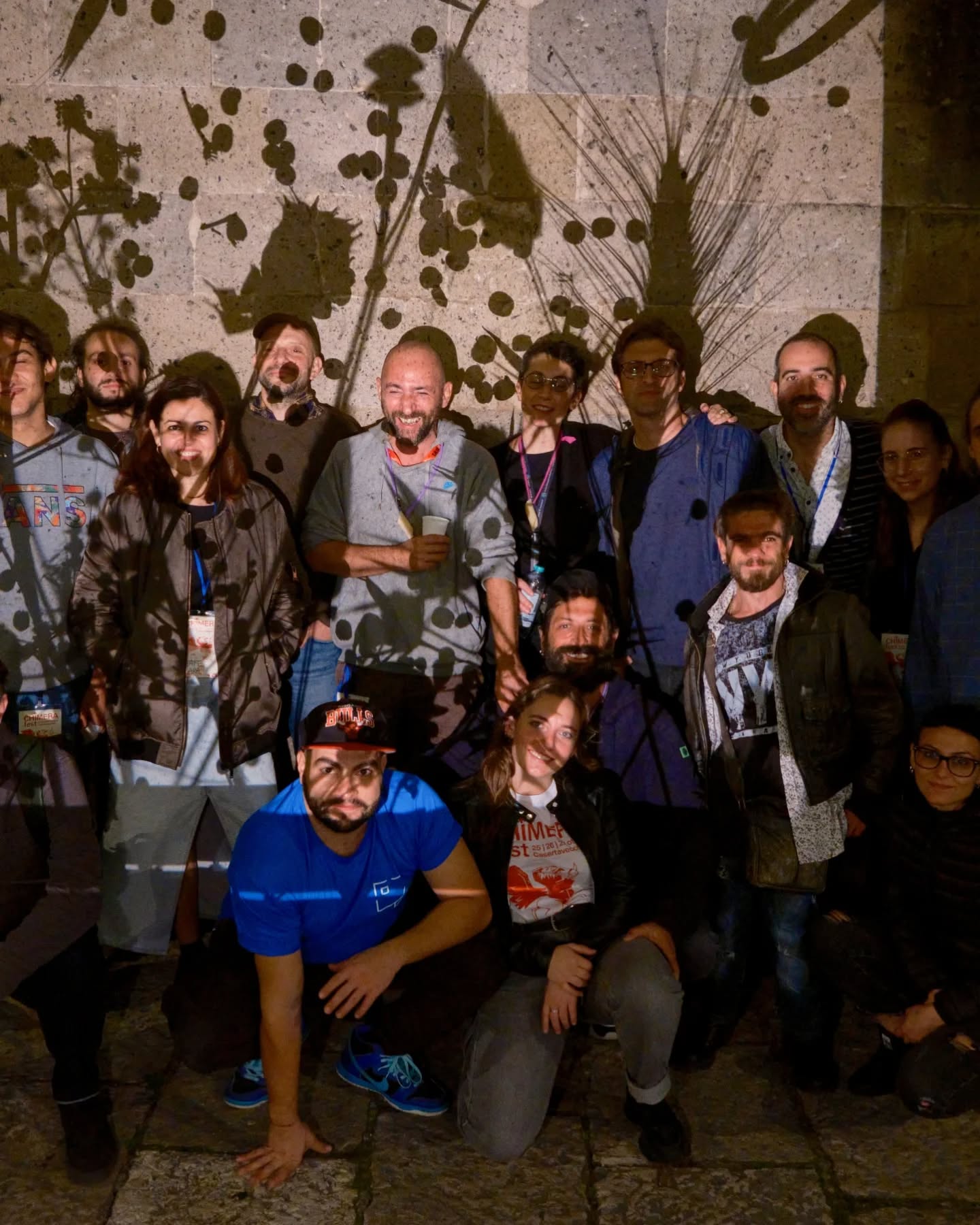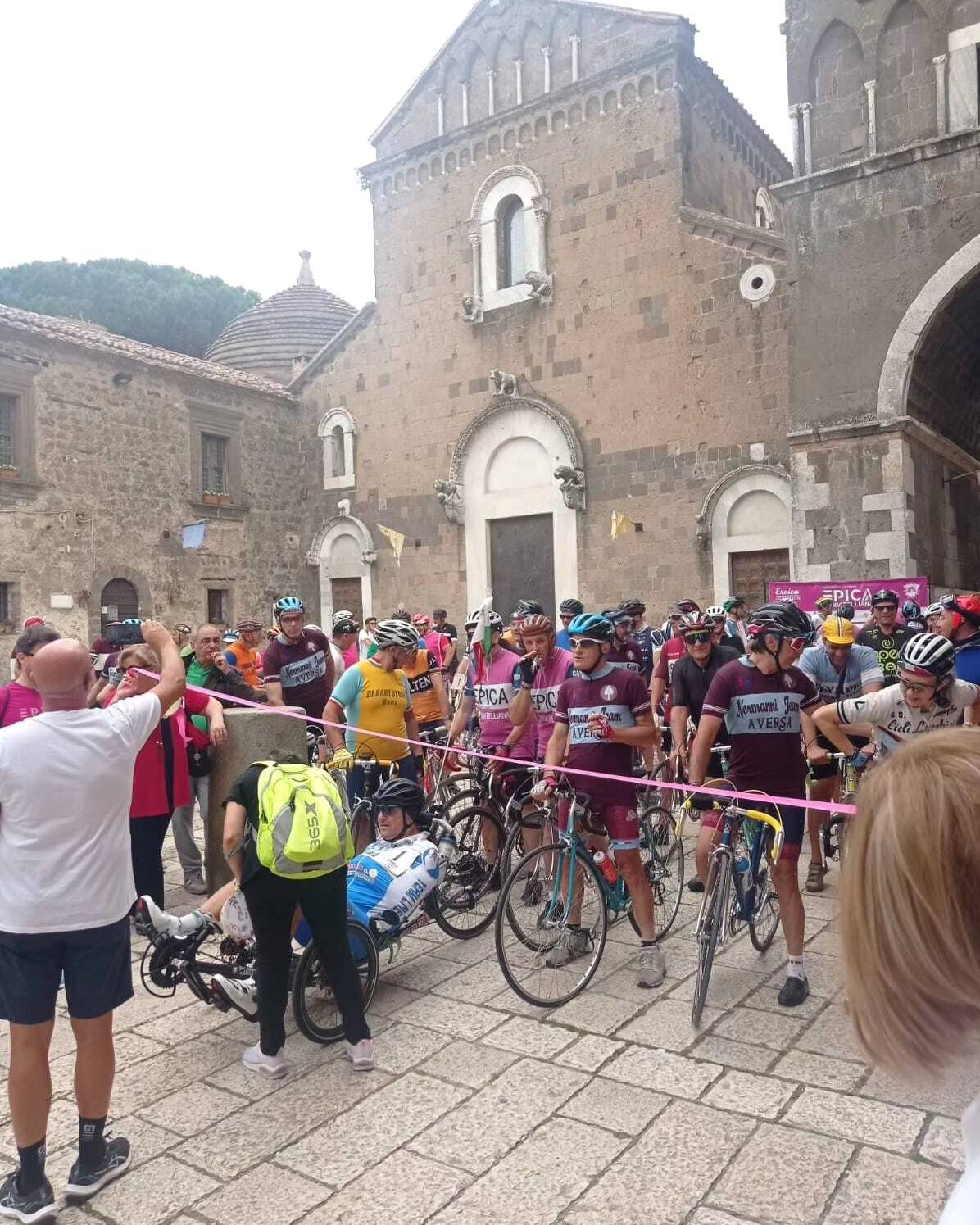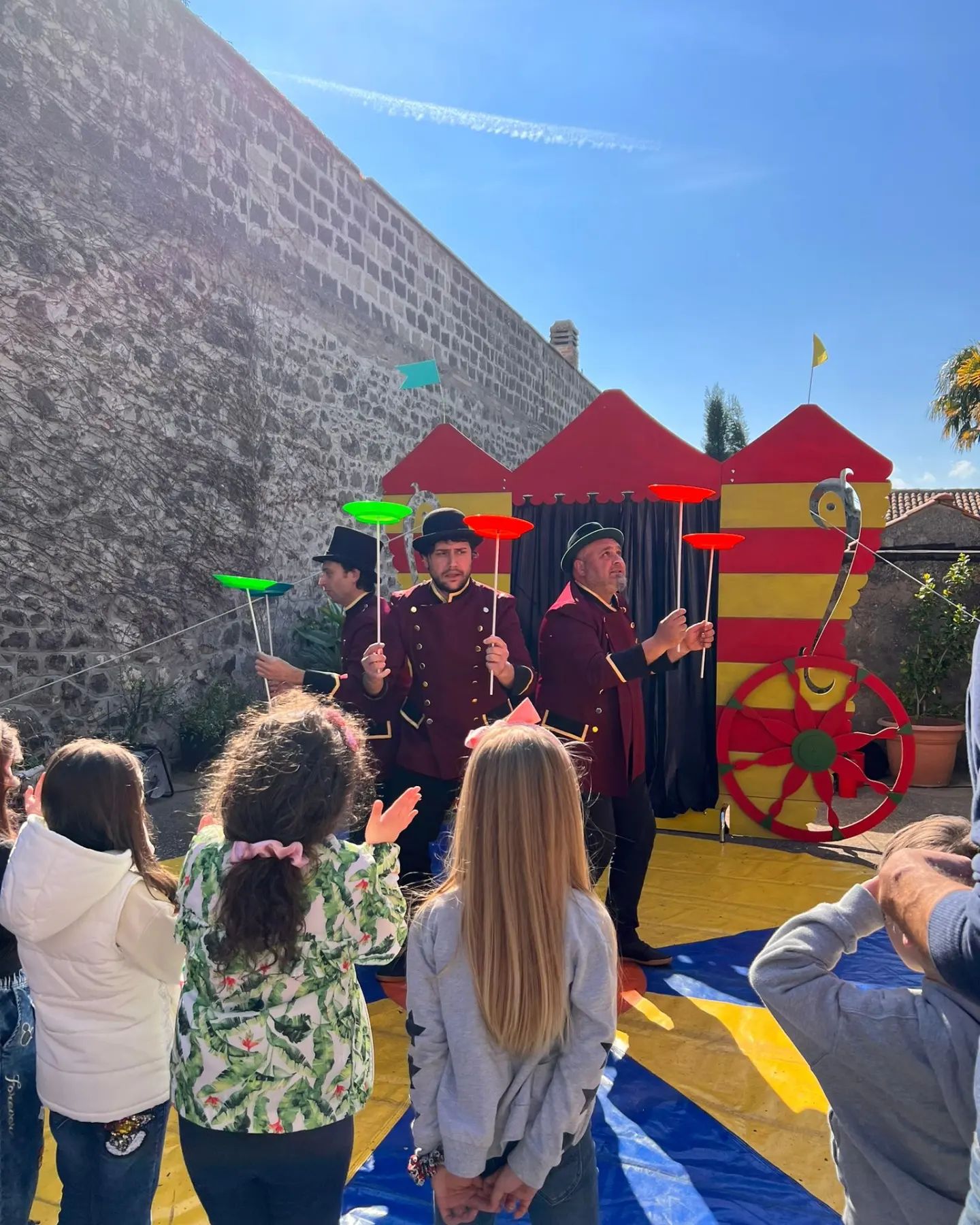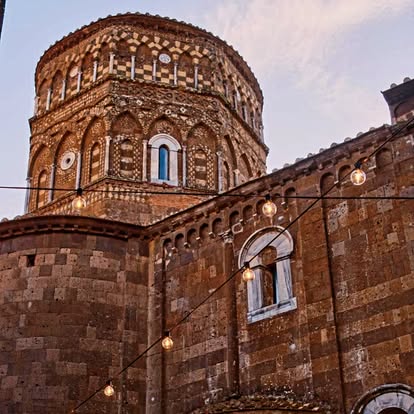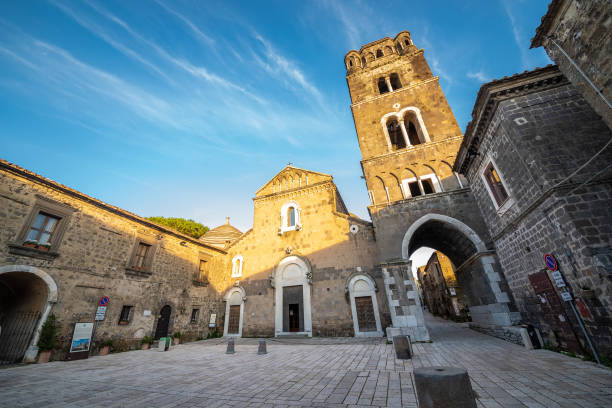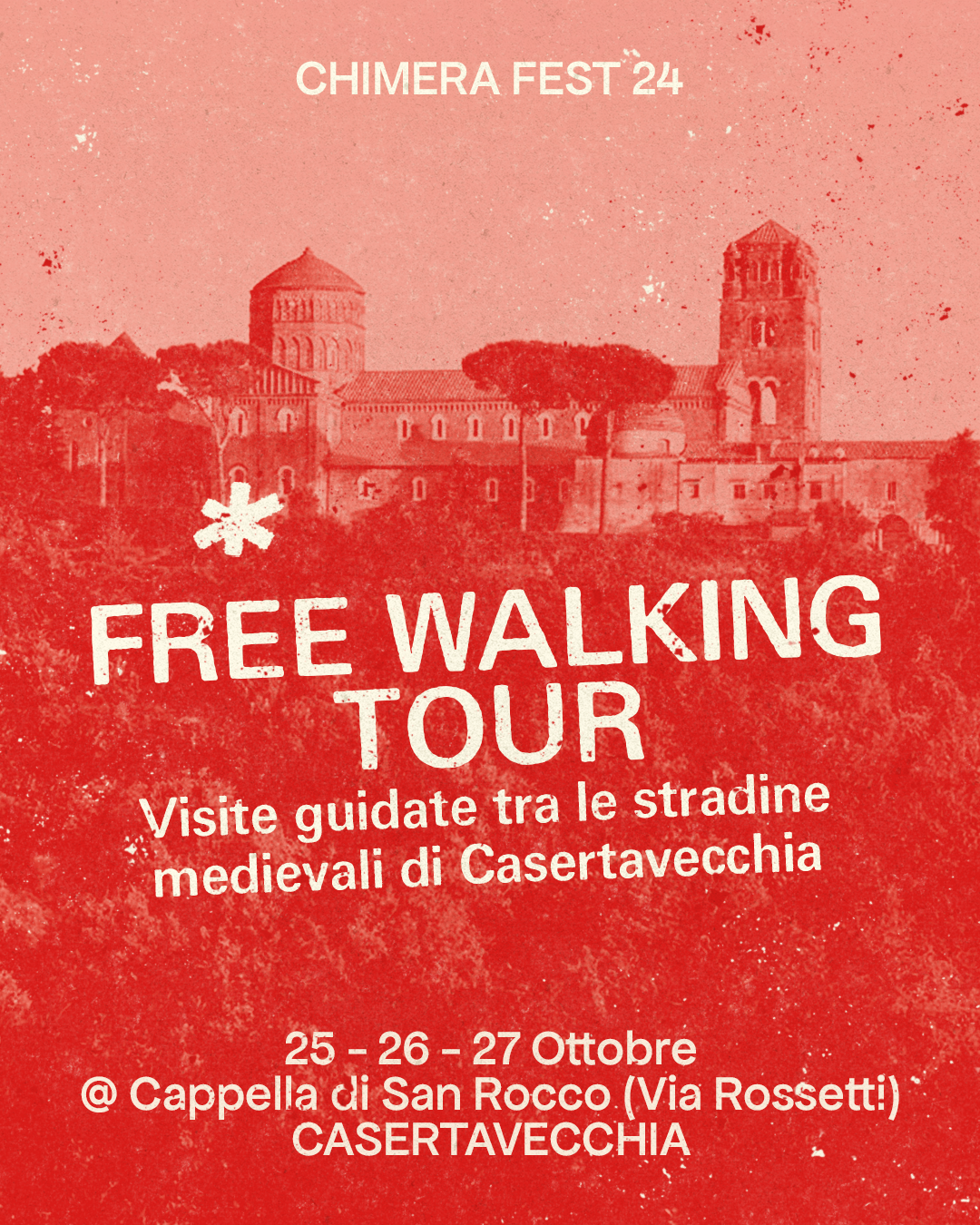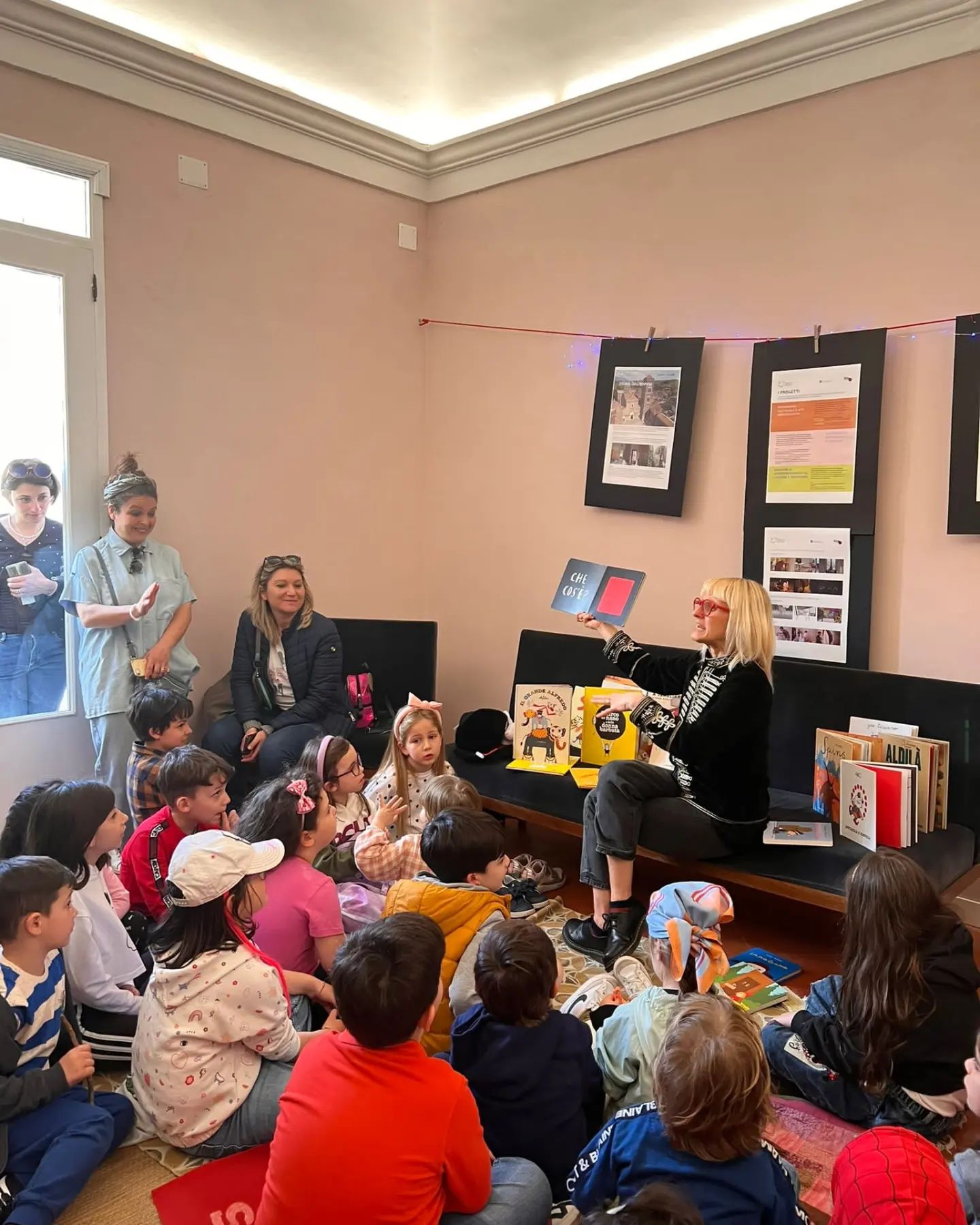Regaining a sense of belonging
La Finestra
La Finestra - The smallest Community Hub in Italy
La Finestra (Italian word for window) is the smallest community hub in Italy: an outpost of culture, identity, community building, placemaking and innovation. The Hub is housed in an ancient tower in the heart of Casertavecchia, a medieval village located a few kilometers from Caserta, surrounded by the Tifatini hills. Today this public space, refurbished, has returned to an open community and hosts activities, services and socio-cultural initiatives.
Italy
Local
Casertavecchia, medieval town a few kilometers from Caserta (20km from Naples)
It addresses urban-rural linkages
It refers to a physical transformation of the built environment (hard investment)
Yes
2022-07-01
No
No
No
As a representative of an organisation
A medieval town in the south of Italy and a tiny ancient tower located in the immediate proximity of the unique Romanesque style Cathedral of Saint Michael Archangel. Our Community Hub, La Finestra, was originally the access to the bell tower built around 1200 A.C. and for 7 centuries helped carry out the function of community gatherings. Crossing 9 centuries of domination by the Longobards, Swabians, Aragonese and Bourbons, the tower has reached the present day, where, starting from the first half of the 1900th century was used as the community school and finally as Post Office until the end of the 80s of the last century. After more than 40 years of abandonment, thanks to our direct investment for the refurbishment and a re-functionalization, the tower has a new life and has finally been given back to the community as an open and multifunctional hub.
Our goal is to give a point of reference to the community of residents, visitors and organizations that want to contribute to the revitalization of an often forgotten territory, that hides an enormous environmental, cultural and human potential. La Finestra is open to everyone!
Residents, tourists and visitors, artists, craftsmen, artisans, cultural and social workers, activists and researchers.
Presently the hub is open, almost completley refurbished and has a running calendar of events and activites. In 2024 we launched our first community festival, Chimera Fest (https://chimerafest.it/), an opportunity to use arts and culture to takle contemporary wicked problems. Here a short video of the 2024 festival: (https://www.la-finestra.it/project/646/). Now we want to continue our journey with the second edition of the festival in September 2025, but also implementing new activites and services that can meet local needs and represent new stimuli for the community. We aldo want to bring this small village on a European dimension and we profoundly believe that NEB values and methodologies can be the right roadmap.
Our goal is to give a point of reference to the community of residents, visitors and organizations that want to contribute to the revitalization of an often forgotten territory, that hides an enormous environmental, cultural and human potential. La Finestra is open to everyone!
Residents, tourists and visitors, artists, craftsmen, artisans, cultural and social workers, activists and researchers.
Presently the hub is open, almost completley refurbished and has a running calendar of events and activites. In 2024 we launched our first community festival, Chimera Fest (https://chimerafest.it/), an opportunity to use arts and culture to takle contemporary wicked problems. Here a short video of the 2024 festival: (https://www.la-finestra.it/project/646/). Now we want to continue our journey with the second edition of the festival in September 2025, but also implementing new activites and services that can meet local needs and represent new stimuli for the community. We aldo want to bring this small village on a European dimension and we profoundly believe that NEB values and methodologies can be the right roadmap.
Ecology
Culture
Placemaking
Community
Accessibility
Working on an abandoned historic heritage asset, in a very unique scenario as the medieval town of Casertavecchia, has been a challenge for Itinerari Paralleli from different perspectives. First of all from the infrastructural point of view, combining deep renovation, with administrative compliance and requests, has been a challenge in terms of architectural and technical management. Second of all, the economic investment made by a small non profit organization that has invested directly, without external funding, in the renovation and refurbishment with the clear mission of demonstrating that in difficult territories it is not possible to wait for public funding and investments, but you have to act directly and lead the urgence for change. Then the context, our primary goal is the sustainable development of a deprived social, cultural and economic community in the south of Italy, starting from a "symbolic", but relevant project which has the ambition to create connections among local actors, institutions and communities. Last but not least our strong belief that our cultural model can be self sufficient and sustainable exactly by following NEBs principles: 1. working on the role of esthetics as a means to foster wellbeing and cultural welfare 2. participative and transparent approach to foster a common sense of belonging and support for the project 3. sustainable not only by means of a Just Transition perspective, but as an integrated model of economic, social, green approach for innovative forms of cultural and social entrepreneurship. We believe to be a clear benchmark on how the NEB approach can move from a wide European perspective and land in a 150 people village in the south of Italy with the same motivation, ambition and intensity as La Finestra is showing through its first years of activity.
La Finestra Community Hub is located only 10 kilometers away from the Royal Palace of Caserta and the San Leucio Belvedere (both included as UNESCO heritage sites) and 25 from the more famous city of Naples. This feature makes La Finestra a strategic location to combine socio-cultural and artistic activities in a landscape steeped in history. Since we first signed the protocol for the concession of the building, we promoted La Finestra as a new beginning for the cultural ecosystem in the area, connecting people, whether tourists or locals, artists or activists, with the environment around them, to enhance awareness on the importance for inner areas and the role of art, heritage and community building. Its primary goal is to re-establish accessibility, initially targeting the local community and neighboring territories, and subsequently extending this accessibility to the broader tourist population connected to the area. La Finestra project is also connected to the "Cammini e Percorsi" initiative promoted by the Italian Public Property Agency, focused on the recovery of historical buildings situated along Italy's ancient routes. La Finestra in fact is situated not far from the Appia roman road and the Via Francigena del Sud (https://www.viefrancigene.org/en/the-francigena-ways-in-the-south/). Not many projects can better describe a public asset, given to a grassroot organisation, that managed to invest proper budget to transform an abandoned space into a new hub open to all. These we believe are the essential elements promoted by the NEB values and principles that we turned into a real experience and project. La Finestra serves as a stronghold against the cultural impoverishment affecting the referenced areas, ensuring accessibility to a diverse audience.
Through a model of participatory governance, citizens can reclaim their role as the protagonists of their city, bringing forth their needs and proposals into the discourse.
Central to the project is the activation of channels for active listening, fostering collaboration among stakeholders, and recognizing the space as a reference point for both the community and tourists. It serves as the primary welcoming space due to its strategic positioning. We offer: 1. a library open to consultation, focusing on environmentally sustainable and slow tourism 2. a small shop with local enogastronomic products coming from the Slow Food network 3. visits to the village 4. organise debates and workshops accessible to everyone 5. Offer events and cultural activities trying to bring national and international artists in the small context of Casertavecchia. The project's objective also focuses on exclusion driven by economic disparities, guaranteeing experiences and activities that are open and accessible to all. La Finestra commits to being a bastion for sharing knowledge, art, culture, promoting sustainable tourism models, and embracing shared management approaches to enhance the Campania region's artistic and cultural heritage by fostering dialogue between new and traditional artistic forms. We created a "shared keys" service which makes the space available to anyone with proposals aligned with the project's mission, making La Finestra a unique asset within the Caserta landscape. All our main events have matched with co-design activities. We also won the Creative Living Lab grant in 2021 from the Ministry of Culture for activities built with people interested in designing artistic labs (https://www.la-finestra.it/en/project/creative-living-lab-2/). In our recent Chimera Fest we promoted a whole section of the Festival, built by a group of 20 under 30 guided by a facilitator (under 30 himself) that brought to the definition of 4 main activities added to the festival programme.
Central to the project is the activation of channels for active listening, fostering collaboration among stakeholders, and recognizing the space as a reference point for both the community and tourists. It serves as the primary welcoming space due to its strategic positioning. We offer: 1. a library open to consultation, focusing on environmentally sustainable and slow tourism 2. a small shop with local enogastronomic products coming from the Slow Food network 3. visits to the village 4. organise debates and workshops accessible to everyone 5. Offer events and cultural activities trying to bring national and international artists in the small context of Casertavecchia. The project's objective also focuses on exclusion driven by economic disparities, guaranteeing experiences and activities that are open and accessible to all. La Finestra commits to being a bastion for sharing knowledge, art, culture, promoting sustainable tourism models, and embracing shared management approaches to enhance the Campania region's artistic and cultural heritage by fostering dialogue between new and traditional artistic forms. We created a "shared keys" service which makes the space available to anyone with proposals aligned with the project's mission, making La Finestra a unique asset within the Caserta landscape. All our main events have matched with co-design activities. We also won the Creative Living Lab grant in 2021 from the Ministry of Culture for activities built with people interested in designing artistic labs (https://www.la-finestra.it/en/project/creative-living-lab-2/). In our recent Chimera Fest we promoted a whole section of the Festival, built by a group of 20 under 30 guided by a facilitator (under 30 himself) that brought to the definition of 4 main activities added to the festival programme.
La Finestra is a grassroot project, a challenge for a group of young professionals that wanted to invest their competences and time in the community they were born in and from which many had to leave to find better life conditions elsewhere. When we decided to start the project we were motivated by the idea of creating new connections and opportunities for the people of Casertavecchia and Caserta. It was fascinating to rethink the space starting from its origins. We have in fact studied the ancient function of the tower that was used as a space to call for community gatherings and connection with the local population. When we started the refurbishment of the tower, all locals were excited to think that finally, that abandoned, but symbolic space, could return to life. There are only 150 residents in Casertavecchia, but if we add all the residents in the nearby communities, we have over 3 thousand people that are marginalized in terms of cultural opportunities and welfare services. Of course we can’t represent the solution for all the social needs, but certainly we represent something different, a new discourse that is moving different target segments to get in touch and participate. It could be a local artist, a local organisation or residents that use our space to play chess or have a chat. We have created a family atmosphere, opening a space in hours and days where everything in the village is closed. We also shared our keys, leaving them in the local cafeteria in order to have anyone to just step in and feel at home. During our main events and activities, many locals work with us as volunteers or lend us their private spaces for workshops and activities. We have in fact organised concerts in the local church, a bread making workshop in a neighbour's private terrace, activities for children in a local restaurant and installation around the village using private and public spaces. La Finestra is a growing project that can work only if the community supports it.
La Finestra is a Multilevel Engagement project. First of all the whole process started with a public-private protocol that allowed us to receive the building from national agencies (Agenzia del Demanio and Cassa Depositi e Prestiti) that also participated in the definition of the hub model we wanted to create. Since the assignment of the tower we have worked with the Municipality of Caserta with which we have signed several protocols and partnerships to consolidate La Finestra as a public hub for art, heritage and cultural welfare activities. We have been involved and are constantly contacting local organisations that want to work with us or propose their own activities and initiatives in the hub. In example, in the past two years we hosted a wide range of initiatives in partnership with different stakeholders and target groups: 1. cultural activities such as https://www.unborgodilibri.it/, 2. installations https://artandscience.rs/en/klimatska-kapsula-2/ 3. Cyclotourism events https://epicavanvitelliana.it/ 4. Sustainable enogastronomic conferences https://www.slowfood.com/thematic-network/slow-wine-coalition/ just to name a few. In our latest event, Chimera Fest, we have done a long audience development and community engagement work to involve different communities in our programme and events. In the past year we have started moving on a EU level promoting La Finestra as pilot project in several E+ and Horizon Programme calls. In the next months we will also complete our subscription to the European Creative Hub Network. We are working to have a clear local, across levels and global perspective of our project, following the NEB working principles defined by the NEB Compass.
To make La Finestra possible, we created a cross-sectoral and interdisciplinary team of people aged between 20 and 40 years of age, all born and most of them still living in Caserta. Two cultural and social workers who shaped the idea and started working on the project, Sergio Galasso and Rosario Lerro. With them, two architects and designers, Antonio Buonocore and Nicola Bove. Sara Scarpati, an archeologist and community manager who started working to integrate La Finestra with local needs. For media, communication and brand identity, Alessia Guardascione and Claudia Del Prete, who set up our communication kit, website and socials. Roberto Greco, eu project expert and trainer supported the activities and everyday start-up of the community hub together with our civil service volunteers. Moreover, during these three years of activity, many professionals worked with us bringing new ideas and projects. To name a few and thank them for their support: Marco Ghidelli - Photographer; Angelo Cretella - Film Maker; Augusto Ferraiuolo - Anthropologist; Luca “Bifido” Bifulco - Street artist; Domenico Santo - Actor and street performer; Sara Ferraiolo - Green Coordinator; Simone Caputo - Music curator. La Finestra is without any doubt a multidisciplinary result of experience, competence and passion that embraces the value of contamination and activism. That said, La Finestra is also a project that uses a beyond-disciplinary approach. We work with locals that bring experiences, knowledge and memories to add informal know-how and immaterial culture into the project. In one of our latest projects for example, Upsidedown (https://www.instagram.com/itinerariparalleli/reel/DEhZygmJOTW/ ; https://www.instagram.com/itinerariparalleli/reel/C-H5AXXMz7Y/ ), we are using 3D scanners and artisting remix to connect local memories, collected with one-2-one interviews, with history, heritage and art to create new narratives on the local heritage assets.
La Finestra reclaims a material and immaterial space of dialogue that for a long time has been taken away from Casertavecchia and Caserta citizens. We don’t want to be another drop in a city primarily living on commercial activities and hit and run tourism. Instead, we aspire to reactivate a sense of belonging to the vibrant reality and small village of Casertavecchia and its surrounding. As part of a cultural regeneration and placemaking vision, primarily dedicated to increasing knowledge and awareness about a territory, La Finestra is not interested in becoming a postcard frozen in time, but wants to move hearts and minds. The Italian word "Finestra" translates to "window" and aims to be an observation point, a link between the village in which it’s located and the broader national and international ecosystem, playing with the diverse dimensions of culture, capable of connecting tradition, history, and innovation through the active engagement of people. Our innovation has been demonstrated by the interest with which we the community looks and participates in our project. Small communities like Casertavecchia, very similar to many inner territories around Europe lack connection and opportunities to exchange good practices. Bringing multilevel, participative and transdisciplinary approaches in a small context is highly disruptive and enables NEB principles and values to move from theory to practice. As professionals, we gathered experience and competences on a national and European scale, and now decided to go back to our community and invest where needed the most. Often in fact, innovation is not something new in absolute terms, but can also be an already experimented approach that becomes innovative in a specific context. When we imagined La Finestra, we thought of a placemaking project that, implemented in a remote and marginalised territory in the south of Italy, could be a great example for community wellbeing and cultural innovation.
La Finestra Community Hub revolves around three core elements: territory, culture and community. These elements allow us to connect citizens, tourists, organisations and institutions creating a win-win partnership for the valorization of our cultural and natural assets. La Finestra applies the 4P approach (Public-Private-People Partnership) that has always been our multilevel approach before the NEB Initiative was launched in 2020. We apply engagement methodologies that come from our experience in community engagement, promoting initiatives and services that range in a scale of participation from fully delivered activities managed directly by our team, to a self-governed scale of participation where the team moves a step back on management and allows partners and individuals to imagine and fully implement activities. In the past 4 years our approach focused on cultural initiatives as a trigger for social cohesion, capacity building and creative-led territorial regeneration. This is very clear in our latest project, Chimera Fest (https://chimerafest.it/), where we were able to attract over 2000 visitors, 10 private partners, more than 30 volunteers and many citizens and CBOs that contributed to the programme (here the festival page with a short teaser, https://www.la-finestra.it/project/646/). With an informal status, since we were fully operational in 2022, we considered La Finestra as a “NEB Antenna”. A place where core values of Esthetics, Participation and Sustainability were promoted and melted in a cultural project. Finally, to manage and guide our core activities, we have brought together a transdisciplinary team ranging from age 18 to 80 with very different backgrounds. Archeologists, community managers, cultural operators, anthropologists, designers, artisans, artists, researchers and activists. In our opinion, this is evidence of the openness of our project and a demonstration on the approach needed to fulfill NEBs principles for cultural regeneration.
"La Finestra" can be described as a place-based project, located in context affected by significant depopulation and cultural impoverishment. The beneficiaries of the project primarily include the small local community, the inhabitants of the nearby city of Caserta, which itself lacks cultural opportunities, and tourists who occasionally visit the village, including cyclists and walking groups. Nonetheless these characteristics are very common in inner areas all around Europe. That’s why La Finestra can be seen as a territorial experiment from which several elements can be replicated or transferred to other locations. The requalification of historical buildings as cultural and social hubs is very common in medium-large cities, but is not yet a consolidated development strategy in micro-contexts. Our service and business model not only offers a new life to abandoned spaces but also repositions culture at the center, acting as a unifying element for communities. Our offering map concept that combines a “living” info-point, an emporium, a service hub with artistic events and cultural activites, is based on a collaborative strategy that can be adopted elsewhere to encourage a creative-driven engagement model to reinforce local identity while creating innovative placemaking. This decentralized governance encourages greater participation and a sense of belonging. Our "shared keys service" for example, is more than an opportunity to open and share our hub, but can be considered a replicable governance methodology to engage and create ownership among end users and target groups. Finally we are working to replicate our Festival, Chimera Fest, in other small contexts where we can experiment the energy of art as a means for territorial placemaking and community building.
The project is committed to addressing global challenges, adapting local solutions in line with the UN's Agenda 2030 and the three pillars of sustainable development: economic, environmental, and social dimensions. The project faces two challenging objectives. The first involves reducing inequalities by promoting culturally accessible events and activities to a broad audience. The second aims at the sustainable development of territories and, more importantly, communities, in harmony with the surrounding natural environment. This is achieved by establishing "La Finestra" as a community hub, promoting economic and social equity, thereby reducing disparities among various segments of society. The attempt to transform cities into sustainable communities involves implementing practices that respect the environment and improve residents' quality of life. The project aligns with the evolution of tourism towards more sustainable practice. Drawing inspiration from the UN's Brundtland Report, it promotes tourism that balances economic, social, and environmental impacts, preserving resources for future generations. We are also inspired and guided by 2025-2028 EU Commission priorities, specifically “supporting people, strengthening our societies and our social model”, where 1. addressing social fairness 2. supporting young generations and 3. promoting equality and equity among communities are the baseline for all our activities and initiatives as also expressed in the 2019 Lisbon World Cities Culture Summit. Finally of course we are committed to the NEB Compass values and working principles, which, despite the hyperlocality of our initiative, we believe is central to put La Finestra on a European scale of cultural and social innovation.
In terms of results, we believe that La Finestra, through the effort of its proponents and main partners, has achieved:
Architectural refurbishment of the ex-poste tower -> over 35 thousand euro invested in bringing back to life and making accessible a symbol and public space
Over 40 cultural events have been organized inside the community hub and in the surrounding locations and streets of Casertavecchia since the refurbishment has ended
More than 300 families have participated to our cultural activities with an average participation of 50 kids to each family friendly activity
Over 20 local organization have been involved and received economic income through co-programmed events with La Finestra
The space is now open 5 days a week for 6 hours for touristic information and basic services to an average of 20 to 50 temporary residents that visit the medieval town of Casertavecchia
With our co-design activities we have engaged more than 50 youngsters in imagining activities and workshops
We have received two financial awards: from the Italian Ministry of Culture programme Creative Living Lab and from Chiesa Valdese, to support some of the artistic initiatives and to co-finance the purchase of technical facilities for the hub. In total the private funds invested by Itinerari Paralleli have been more than 80 thousand euro in four years, while private and public donors have granted 38 thousand euro since 2019.
Our project Upsidedown (https://www.la-finestra.it/project/710/) we are preserving and disseminating, with new technologies, the historical cultural heritage in Casertavecchia
In 2024 our Chimera Fest first edition brought more than 2000 visitors to town and was considered one of the most interesting cultural experiences of the past years.
Architectural refurbishment of the ex-poste tower -> over 35 thousand euro invested in bringing back to life and making accessible a symbol and public space
Over 40 cultural events have been organized inside the community hub and in the surrounding locations and streets of Casertavecchia since the refurbishment has ended
More than 300 families have participated to our cultural activities with an average participation of 50 kids to each family friendly activity
Over 20 local organization have been involved and received economic income through co-programmed events with La Finestra
The space is now open 5 days a week for 6 hours for touristic information and basic services to an average of 20 to 50 temporary residents that visit the medieval town of Casertavecchia
With our co-design activities we have engaged more than 50 youngsters in imagining activities and workshops
We have received two financial awards: from the Italian Ministry of Culture programme Creative Living Lab and from Chiesa Valdese, to support some of the artistic initiatives and to co-finance the purchase of technical facilities for the hub. In total the private funds invested by Itinerari Paralleli have been more than 80 thousand euro in four years, while private and public donors have granted 38 thousand euro since 2019.
Our project Upsidedown (https://www.la-finestra.it/project/710/) we are preserving and disseminating, with new technologies, the historical cultural heritage in Casertavecchia
In 2024 our Chimera Fest first edition brought more than 2000 visitors to town and was considered one of the most interesting cultural experiences of the past years.

